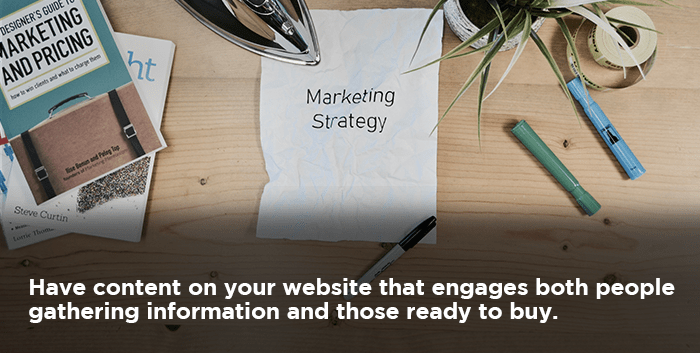And the simple truth is that no one has time to sit on an hour-long webinar! Despite popular belief that everyone is at home in their bathrobe, drinking martinis all day, it’s simply not true. Not only are we all working more than usual, there just seems like no one has time to do anything “fun.” And events are missed for that reason – they used to be an enjoyable way to do business. The change we are all experiencing is taking us out of our comfort zone and forcing us to see beyond what we are used to. Turning your physical event into a virtual one represents an opportunity to do business differently, and is way more than just talking in front of your camera. With a little preparation, you can succeed. Here are six do’s and don’ts when it comes to reinventing the way you plan your next online event.
DO use adapted tools
Before embarking on a virtual event, one of your most important concerns will be to choose the right platform. First, determine your objectives. Do you want to host a live webinar, an interview, an interactive workshop, a virtual exhibition, product demo or a remote training? To make your decision, it is best to outline what would be most useful for your target audience.
Younger audiences usually participate on social media events, whereas mature audiences prefer the security and the ease of use of a dedicated live streaming platform. In addition, having a good video camera, a low latency connection, and a high-quality microphone are the kind of details that are going to make or break the customer experience. Such details will determine the overall impact your event has on your audience. Thinking outside of the box to make your next event unique, by hosting it in a fun virtual environment (like an online trade show), will help you stand out from the crowd, so choosing the right platform to suit your needs is a very important first step.
DON’T jump too fast
Before the big day, think about running a test to make sure your event works according to plan and no technical issues arise that need resolving. You may not be used to hosting virtual events, but your audience may not be used to attending them either. Preparing a short introduction to the platform itself before officially starting your presentation is a simple way to ensure the attendees understand how it works. It would be a shame to lose attendees because of a lack of preparation and explanation. A short video before your event starts, a quick explanation sent by email, or a “how to” shared on social media can go a long way.
DO create interaction with your public
Networking, approaching new prospects, or keeping up with the latest trends are the three main reasons why people usually attend a physical event. During a virtual one, attendees may or may not have the same expectations, so you need to adapt your event accordingly. In order to make your virtual event stand out, take time to interact with your audience, involve them actively in your presentation, and let them discuss with one another. This will contribute to the success of your virtual event. To develop a relaxing atmosphere, you can insert scoring, surveys, word cloud, notations, etc.
DON’T stay too conventional
If participating at exhibitions and conferences was a habit for you, you are going to have to step out of your comfort zone to adapt your event to an online setting. With online events, everything has changed and it is easy to feel disoriented. However, there are plenty of new possibilities to immerse your audience in your universe. Think outside the box to find the tactics that best fit your online event and audience. You can turn to:
- Augmented or virtual reality events: When we participate in a conference call, webinar or workshop, it’s easy to get distracted by what’s going on around us. Using virtual or augmented reality is an engaging way to bring your virtual event to life and actively involve your audience. For example, you could think about implementing different VR conferences room, make a demo of your products in AR, create a virtual exhibition, etc.
- Gamification: If you want to add fun to your virtual event, gamification is a powerful tool to motivate people. Regarding your activity, you can create challenges between the attendees or teams, games on social media, etc. Offering rewards to the winners of the game will as well engage the players and help you to win empathy.
DO think about incentives
Samples, test objects, and goodies represent a significant business edge during physical events. People want to see products, to touch and try them, but also to discuss them with the speakers. So how to solve this issue during a virtual event? As much as possible, you can think about replacing your physical products with a virtual one, attracting your audience with special offers, or even sending them goodies by mail. Implementing this kind of action will allow you to stand out from the other virtual events and encourage people to participate.
DON’T let your event fall into oblivion
Organizing a virtual event is time-consuming and challenging. It would be a shame to see all your effort go to waste because of a video quality issue. The positive aspect of virtual events is that once they are recorded, they can be watched anytime by everyone. So if some of your clients are not available that day, they still have the possibility to view it later. To allow access to your event in replay, you can create a special landing page dedicated to it on your website, upload the video on your YouTube channel or share it on your social media pages.
Conclusion
This year has taken a particular turn and we hope these tips will help you to move to online experiences. If we can give you one last piece of advice, it would be to not try to recreate the exact same event as the one you used to organize. A web-based approach is completely different, so view this as an opportunity to come out with something new and reach a wider audience. Take time to think about the kind of virtual event that is the most adapted to your business and your audience, and then go for it!
Get more tips on how to promote your online next event here.








